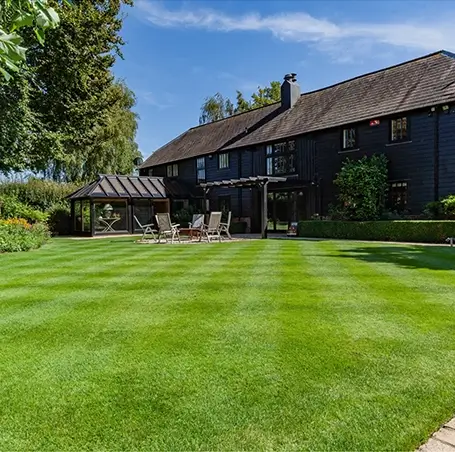A scarifier is a powerful machine that reduces the thatch layer and removes organic matter and debris from between the lower leaf level of the lawn. This, in turn, allows air, water, and nutrients more space to reach the roots in the soil.
Scarification is one of the most important treatments that can be carried out on a lawn, as it also loosens moss to the surface, thereby reducing moss build-up. However, scarifying with the sole intention of fully removing moss may cause unavoidable damage to your lawn. Therefore, it is very important that the lawn operation should only be completed by a competent operator with a professional machine.
One of the most important factors when scarifying is the time of year it is carried out. It should only ever be completed when the grass is actively growing, so it’s essential that it is not carried out during winter, as this will cause unavoidable damage.
Best time to scarify your lawn
calendar_monthSpring is ideal for scarifying lawns as they recover quickly during growth. Autumn works too, as the lawn still grows fast enough to fully recover.
Benefits of lawn scarification
checklistScarification aims to reduce thatch and moss buildup, allowing new, stronger grass to grow more easily and restore the lawn to its best condition.
Frequency of lawn scarification
updateLight scarification can help lawns grow better, but fine fescue grass might need it twice a year for full recovery. Finer grasses develop thatch faster than coarser types like ryegrass.
Many people mistakenly think a lawn raker (domestic scarifier) can match a professional scarifier's results, but they're not the same. Using a DIY electric machine with wire springs often does a poor job, damaging grass and inviting disease.
In contrast, a professional scarifier's solid blade system effectively removes thatch without harming the lawn and prepares it for overseeding to enhance grass cover.
It removes excess thatch, moss and organic matter, improves soil aeration and water penetration, enhances nutrient absorption and grass growth.
The best time is during the growing season which is usually spring where the grass is actively growing and can recover quickly from the scarification process.
Most lawns can recover within a couple of weeks depending on several factors including extent of thatch levels, type of grass and environmental conditions.
Water thoroughly, avoid mowing for a few days and monitor for any signs of stress, pests or diseases. Over-seeding directly after scarification introduces several benefits.
Fertilising after scarification will help the lawn recover quicker as it increases the growth rate of the grass.
Over-seeding is the most beneficial treatment following scarification as it helps aid recovery quicker and introduces newer and stronger grasses. Over-seeding improves the grass sward and helps create a more consistent lawn. It can also be completed in conjunction with fertilising.
The goal of scarification is to remove thatch, moss and organic matter from the lawn. Aeration reduces the soil compaction of the lawn by either forking the lawn or removing cores of soil. The removal of cores of soil, or forking of the lawn improves drainage and also provides a host of other benefits including reduction of moss levels and allowing air, water and nutrients to have direct access to the root system.
312+ Lawn Care Professionals Employed Nationwide
